A year in plants
With 2021 just around the corner, we look back at our favourite plants
Champion plants of 2020
In a year of uncertainty, the changing seasons and the plants that bloom and fade within them have been something to cherish and rely upon.
Every Friday Greenwood shares a plant of the week on our social media channels (LinkedIn, Instagram, Facebook and Twitter). Before we welcome 2021, let’s recap 10 of the best from the past year.
10. Vinca major (greater periwinkle)
Vinca major is more commonly known as greater periwinkle, a name with as much cottage-garden charm as the plant itself. This hardy evergreen sub-shrub vigorous and mat-forming, making it ideal for ground cover or underplanting roses and other shrubs. Its attractive violet-blue blooms will be with you from mid-spring all the way to early autumn. There are some great varieties to try, from ‘Variegata’, whose cream-edged leaves add distinction even in winter, ‘Alba’, with pure white blossoms, and Vinca major var. oxyloba – its narrow petals giving the deep violet flowers starry appearance that led to its popular name. ‘Dartington Star’. This latter variety looks stunning grown with Anemone nemorosa ‘Robinsonia’ for a contrast of pale and vivid mauve flowers of equally beautiful delicacy.
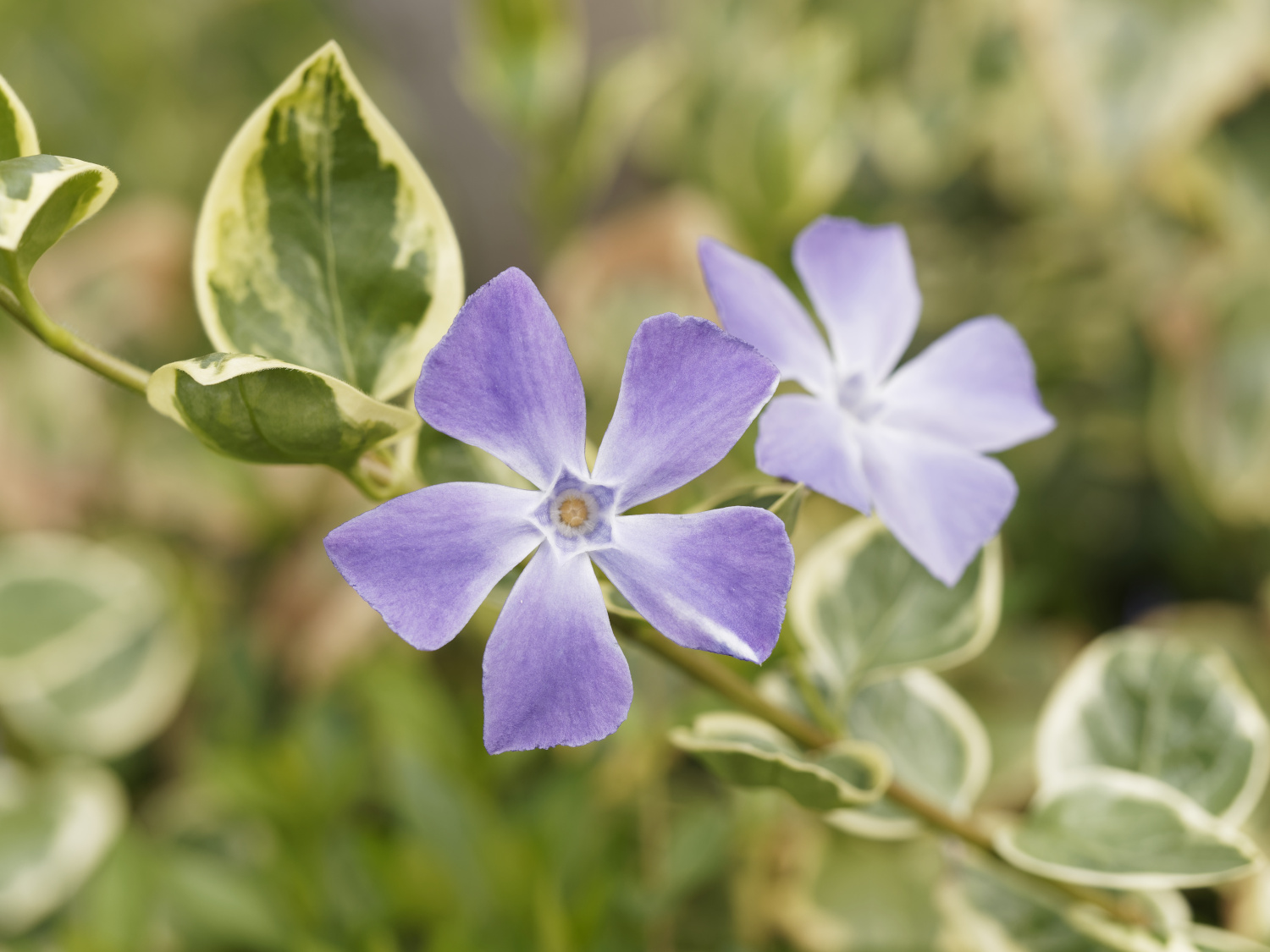
The delightful pale violet blossoms and cream-margined foliage of Vinca Major ‘Variegata’.
9. Sedum ‘Autumn Joy’
This unfussy perennial adds architectural interest to a landscape throughout the seasons. Hylotelephium ‘Herbstfreude’, perhaps better known as Sedum ‘Autumn Joy’ or Autumn stonecrop, begins new growth of its flat-topped rosettes in late winter or early spring. The greenish-white buds open to reveal tiny star-shaped blossoms in pale pink, which mature to a glorious rich hue and retain their attraction even when fading to coppery brown in late summer and early autumn. They thrive in most soil conditions, and look fantastic grown with violet-flowered plants such as Agastache ‘Blue Fortune’ with stunning spire-shaped blooms or Echinops ritro ‘Veitch’s Blue’ or small globe thistle – both create contrast of colour and texture with their distinctive architectural shapes.
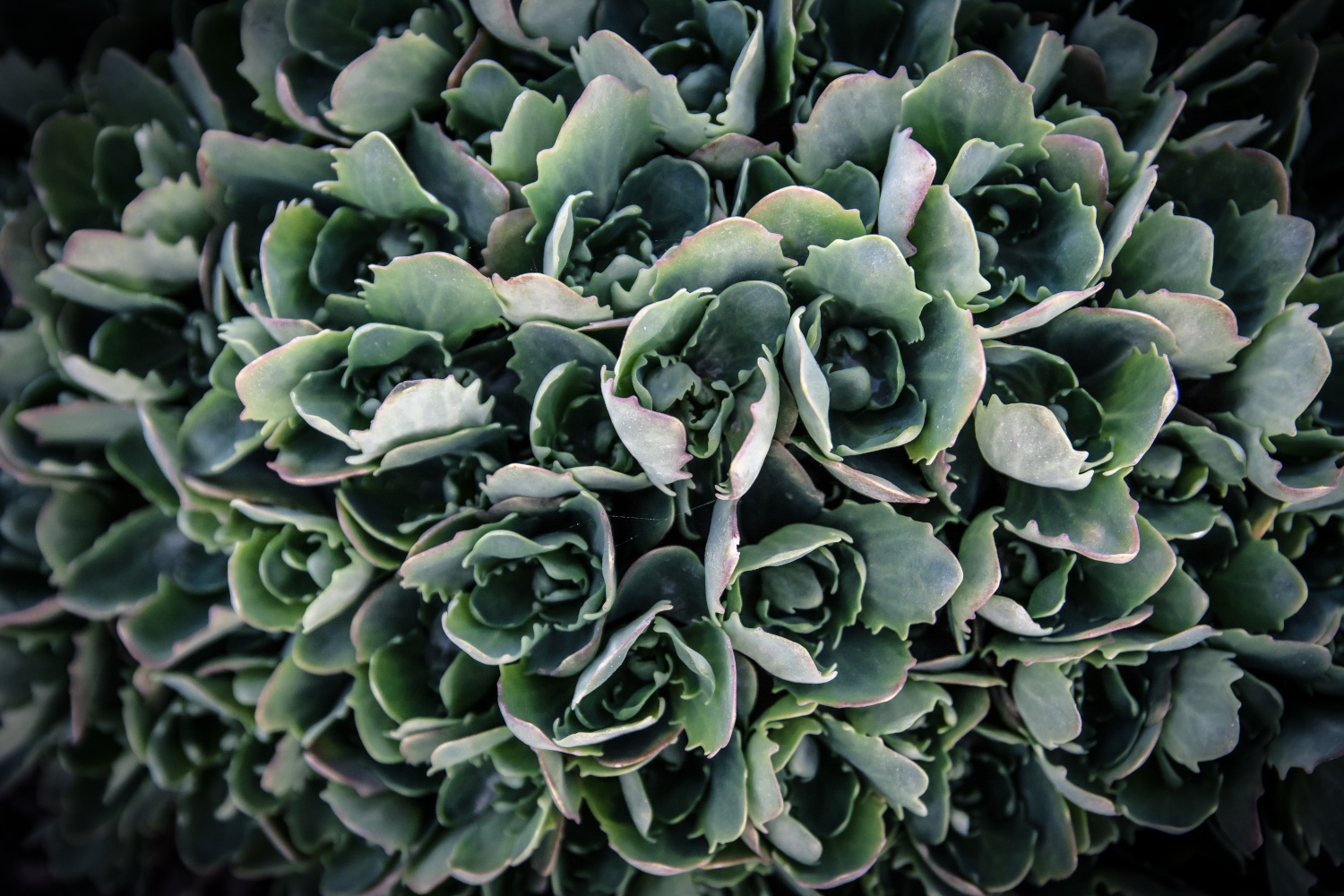
Hylotelephium ‘Herbstfreude’ or Sedum ‘Autumn Joy’, adds attraction and distinction through all its phases.

The fresh green of newly budding Autumn stonecrop.
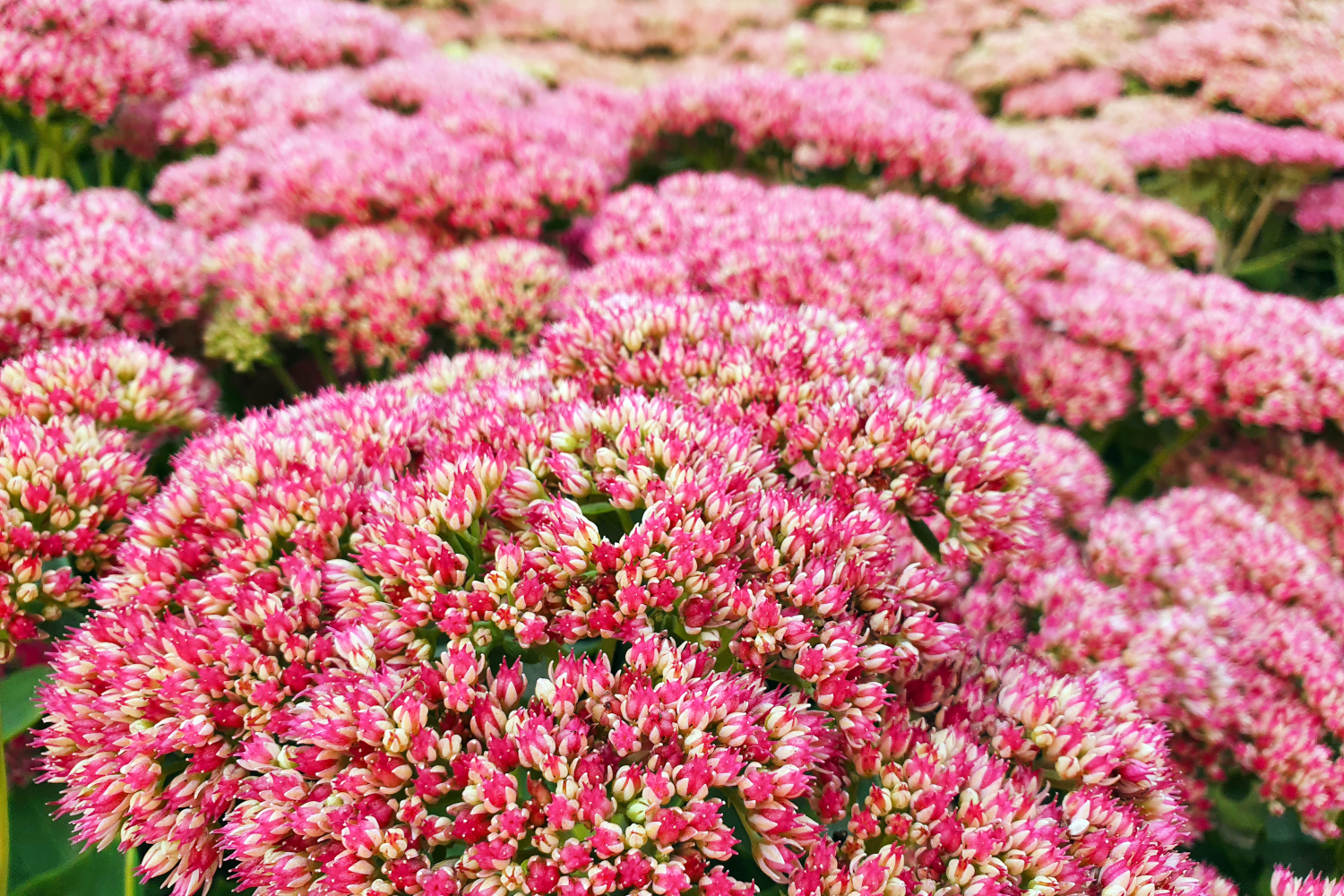
Vivid pink clusters of flowers attract the eye – and bees.

The sunny blooms and charming white-rimmed foliage of Brachyglottis ‘Sunshine’.
8. Brachyglottis ‘Sunshine’
This compact evergreen shrub works in most planting conditions and thrives in coastal areas. Its silver-green foliage has a soft, fuzzy covering which creates a wonderful soft, felt-like appearance for textural interest, and shimmers attractively in sunlight. Brachyglottis ‘Sunshine’ gets its names from its large, daisy-like flowers, which bloom through summer and autumn and add a burst of warming yellow to any environment. Brachyglottis ‘Sunshine’ can also be clipped into a lovely evergreen hedge, perfect for low informal borders.
7. Cistus × argenteus ‘Silver Pink’
Aptly named rock rose, this evergreen shrub originates from the dry rocky parts of the Mediterranean thrives in poor soils. While drought tolerant and fairly low maintenance, the plant requires full sun and shelter. Perfect for sunny well drained borders, or awkward banks and slopes, Cistus × argenteus ‘Silver Pink’ provides great ground cover and its flowers are a delight. Pale pink, with white centres, these fragile blooms individually last only a day, but continue to flourish for a long period during the summer. A great companion plant is Perovskia ‘Blue Spire’, a salvia with aromatic leaves and upright spikes of violet-blue flowers and grey-green foliage.
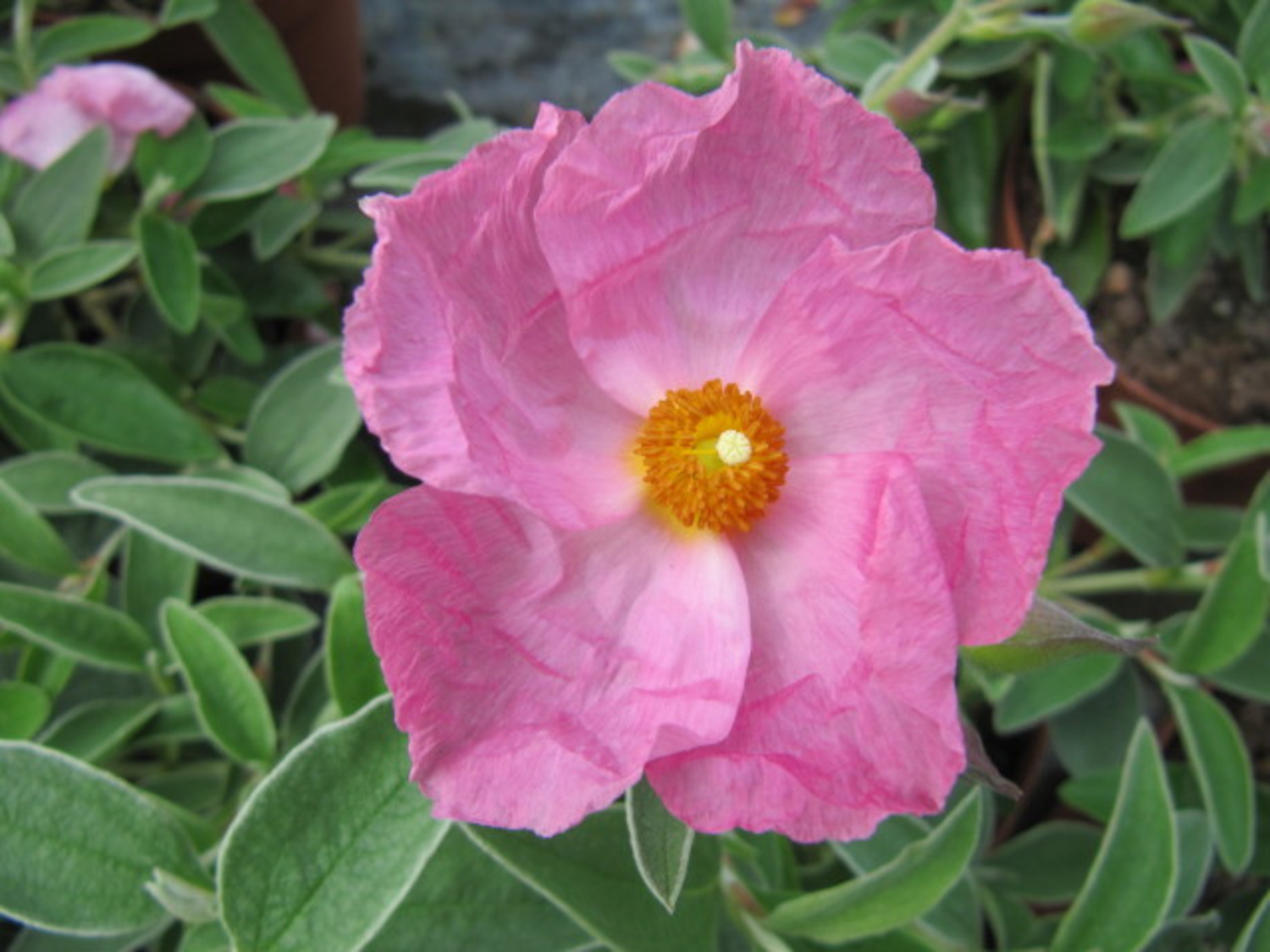
The delicate blushing Cistus × argenteus ‘Silver Pink’.
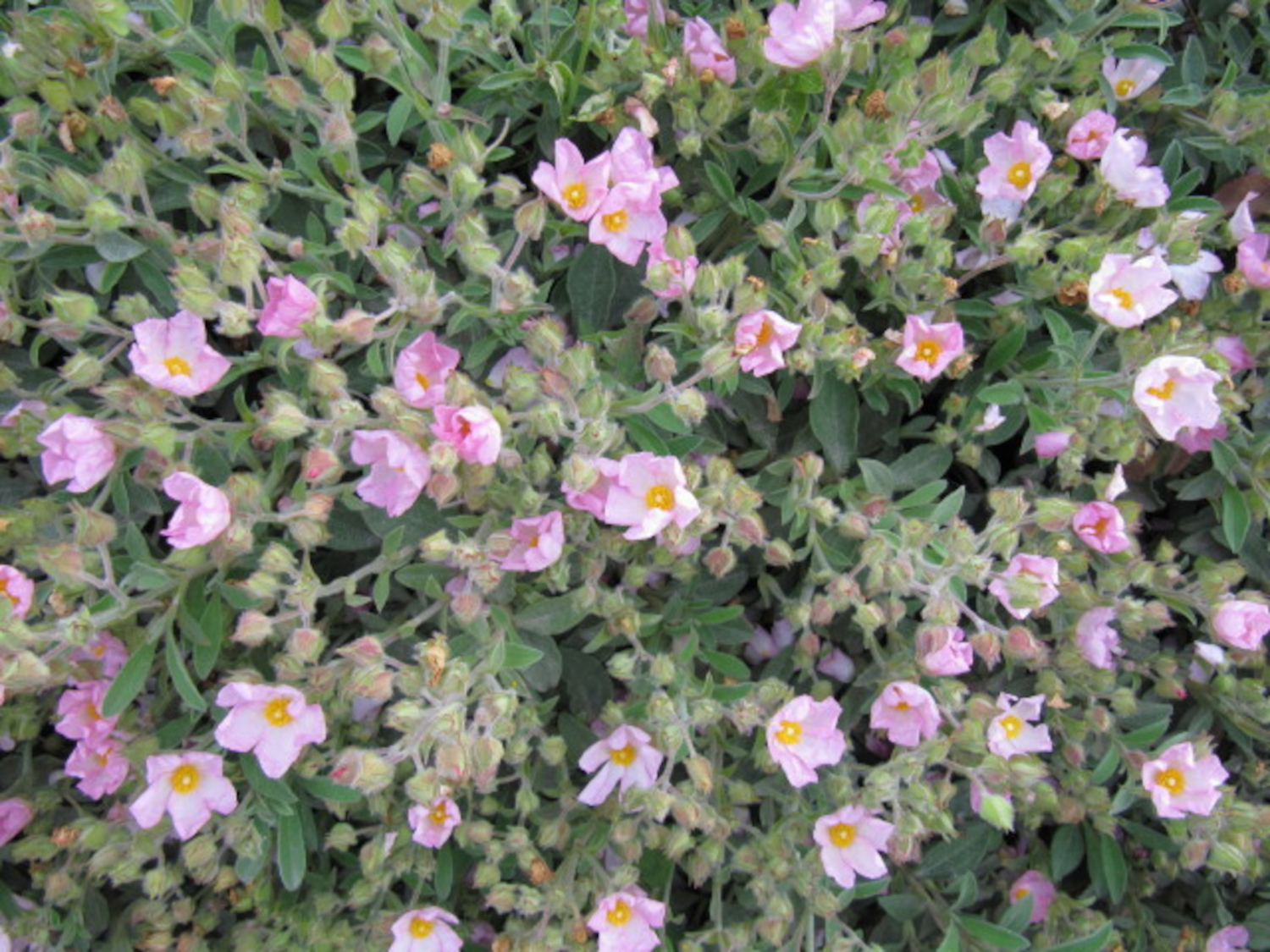
Rock roses create fantastic ground cover.
6. Griselinia littoralis
Griselinia littoralis is Greenwood’s favourite hedging plant. Requiring only moderate maintenance, G. littoralis is a vigorous and attractive plant, creating coverage quickly and retaining a fresh, springlike green throughout the year, even in exposed areas and poor soils. Detailed growing and care instructions can be found on our blog, or watch episode 7 of Tom’s Tips to find out more about the plant’s many benefits from our southern nursery manager, Tom Wozniak, and see young Griselinia littoralis plants thriving in our nurseries.

The glossy foliage of Griselinia littoralis.
5. Rudbeckia fulgida (black-eyed Susan)
The yellow or orange rays of Rudbeckia fulgida blooms are a familiar and welcome sight in late summer, proliferating in fields as well as gardens. The daisy-like blooms, with their prominent conical centre (the ‘eye’ of black-eyed Susan) provide non-stop colour to any landscaped environment when mid-summer flowers begin to fade, paving the way for autumn with their fiery glow. The National Garden Bureau made Rudbeckia fulgida their plant of the year in 2008, so we’re in good company. Glowing or orange coneflowers, are perfect for prairie-style borders, and combine wonderfully with violet-, red- and pink-hued plants such as Eupatorium purpureum (gravel or grass root), Echinacea purpurea (purple coneflower or black samson) and Persicaria amplexicaulis (red bistort).
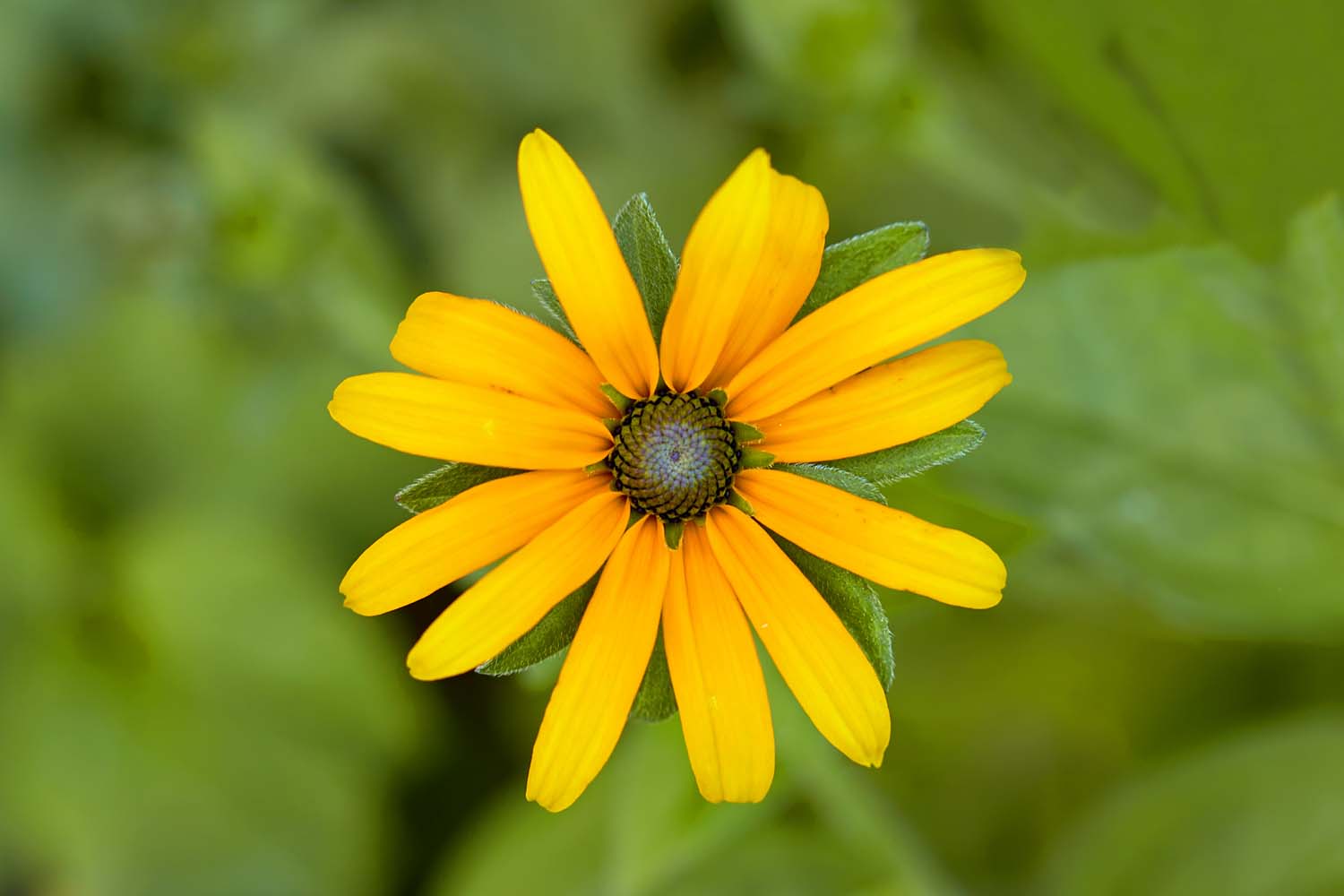
The warming daisy-like blooms of Rudbeckia fulgida are a cheering sight at the tail end of summer..
4. Allium ‘Globemaster’
These wonderfully striking architectural flowers make a bold summer statement in any landscape. Offering texture, colour and scent (Allium has an onion or garlic aroma), these hardy herbaceous perennials boast starry purple flowers in dramatic globe-shaped clusters, on stems up to 80cm in height. Allium ‘Globemaster’ are bulbs, and thrive best when planted in full sun with shelter, though they will tolerate partial shade. These flowers work well planted in drifts with ornamental grasses.
3. Calendula officinalis (common or pot marigold, golds) ⠀
The gorgeous vivid orange blooms of Calendula officinalis last from early summer into early autumn, up until the first frosts, making them a wonderful way to maintain colour after the blaze of summer flowers has faded. As well as their showy daisy-like heads, common marigolds boast aromatic leaves and bushy, long-flowering growth, when given regular deadheading. The flowers were once used for flavouring in soups and stews, giving rise to the common name ‘pot marigold’. Dried calendula petals have also been used as a less dear substitute for saffron. As well as brightening borders, marigolds grow well in vegetable patches, adding colour and attraction to otherwise humdrum beds of cucumbers and the like.
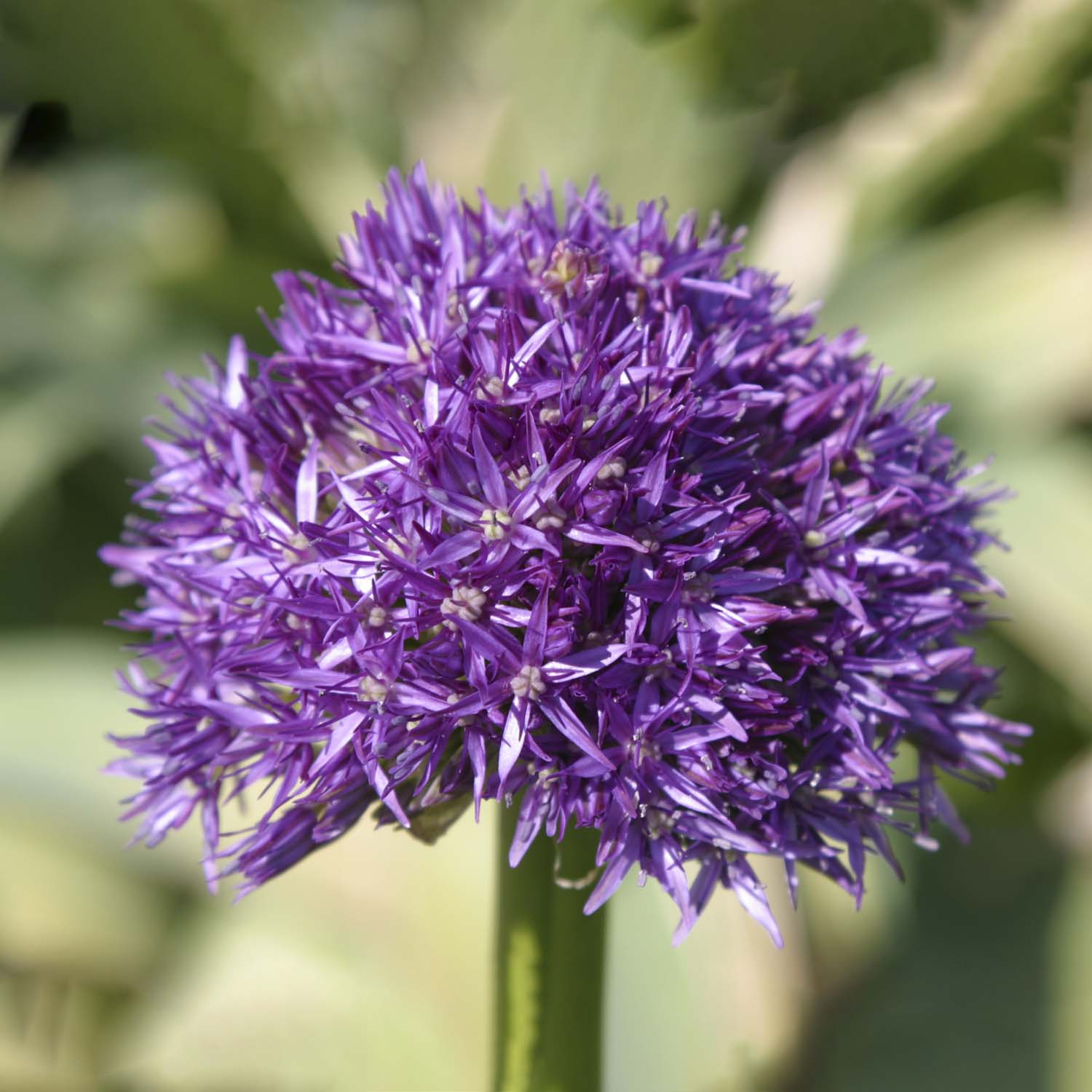
A stunning flowerhead of miniature violet stars – Allium ‘Globemaster’ in bloom.

Calendula officinalis add autumn brilliance to any landscape.
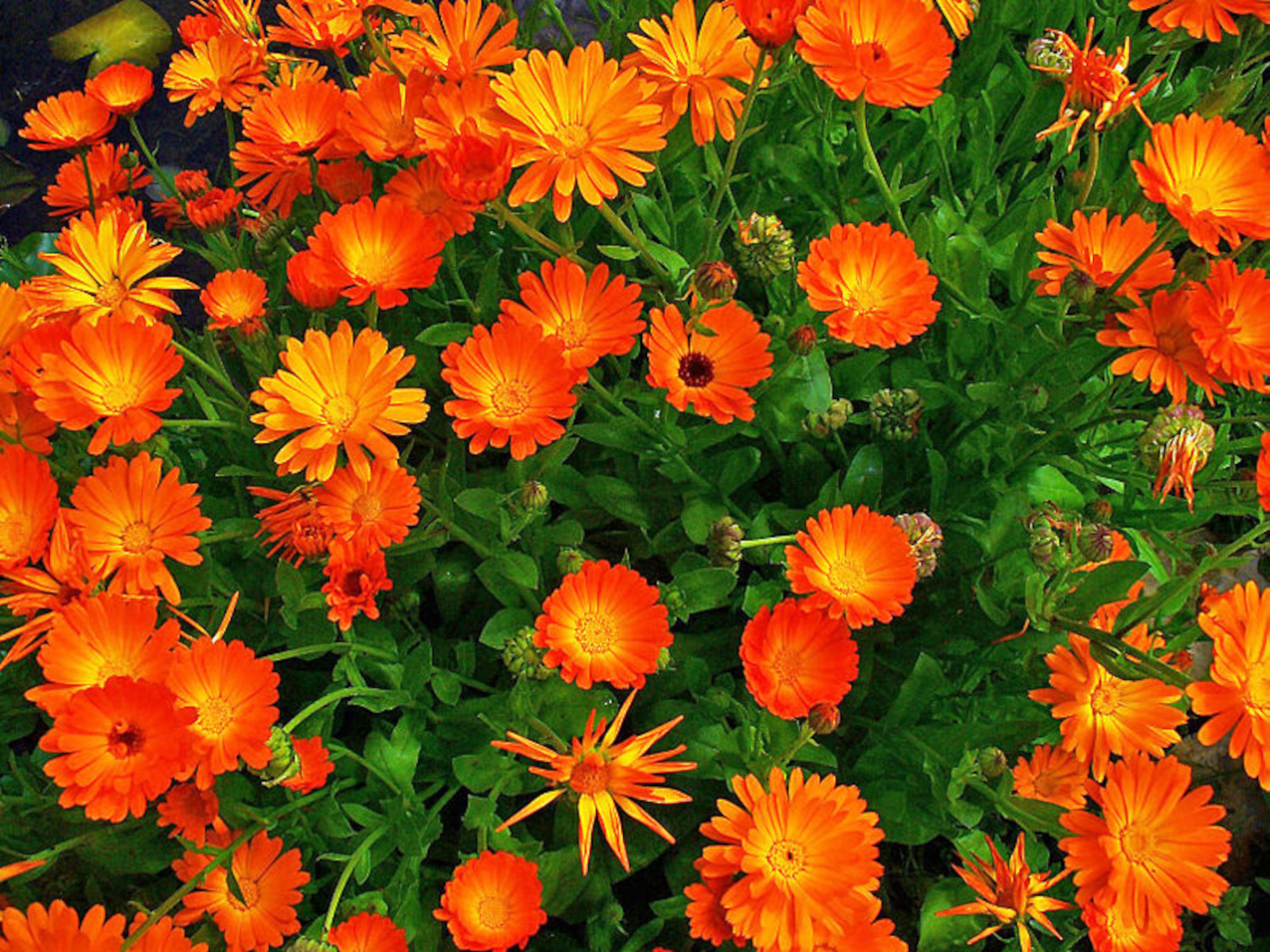
Marigolds require regular deadheading to maximise the flowering period.
2. Nelumbo nucifera ‘Sacred Lotus’
Requiring full sun and shelter, Nelumbo nucifera bloom from June to July, offering delightful interest for pond margins and areas of shallow water with their rounded lily-like leaves of delicate pink. Unlike water lilies, sacred lotus flowers can grow above water level to a considerable height, accentuating the beauty of their waxy blooms. They are also notable for the yellow, conelike central receptable.
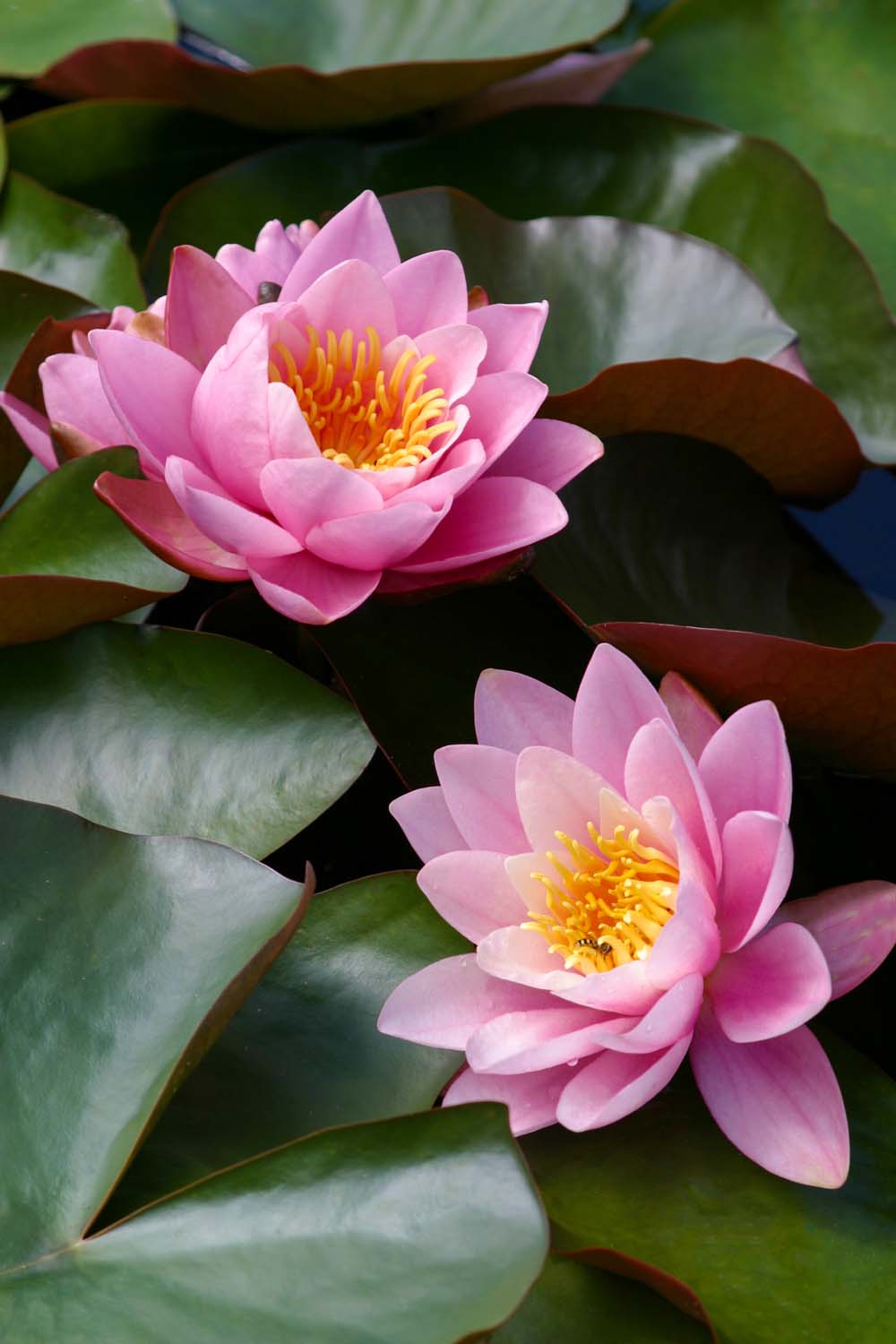
Sacred Lotus flowers are fantastic for pond margins.
1. Caryopteris x clandonesis ‘Heavenly Blue’
We devoted a whole blog to this deciduous shrub, and no wonder. Its grey-green leaves and beautifully contrasting clusters of dark blue flowers are showcased during the late summer and early autumn, working well in the middle of borders with its strong upright habit. Caryopteris x clandonesis ‘Heavenly Blue’ flowers make a fantastic addition to communal gardens and are generally disease free, besides being a magnet for pollinators. A great opportunity to add to a bright colour palette, try combining with bright annuals such as Zinnia elegans ‘Orange King’. Alternatively, ‘Heavenly Blue’ works well with Salvia (try ‘Pink Delight’) or Tradescantia pallida ‘Purpurea’ (Purple Heart).

A bumblebee alights on a Caryopteris x clandonensis flower.
To a 2021 filled with fantastic plants
We were truly spoilt for choice when selecting these ten plants to represent 2020. If we missed one of your favourite plants this year, let us know and we’ll give them the full plant of the week treatment in 2021.
The whole G-team joins in wishing you a happy and peaceful new year.

